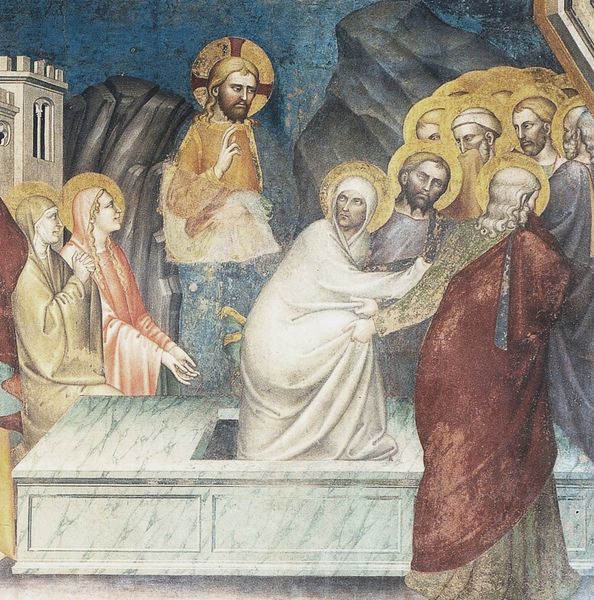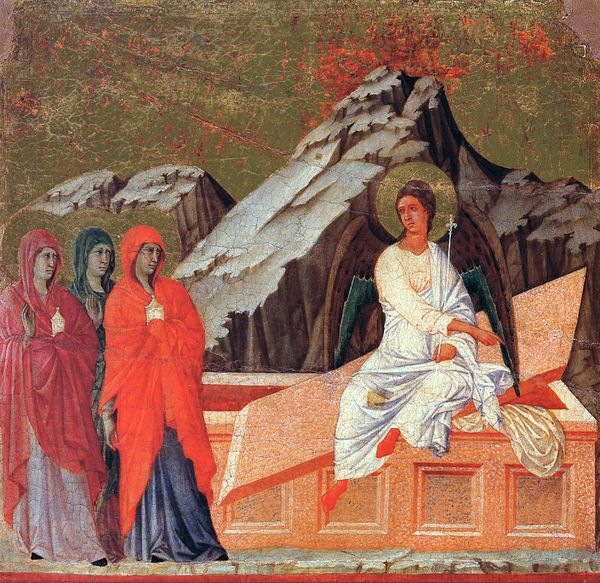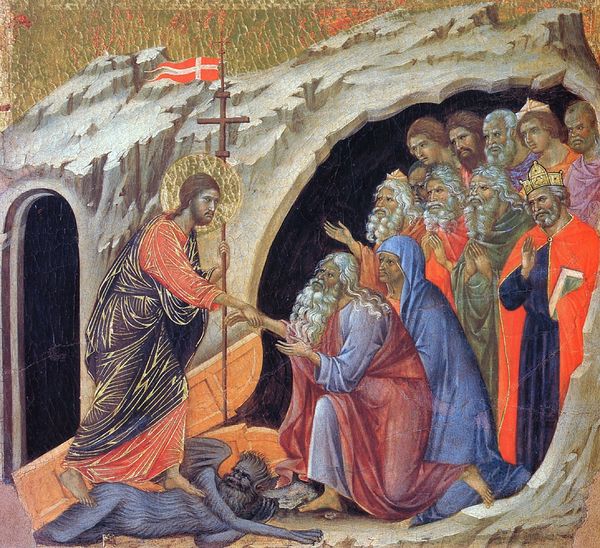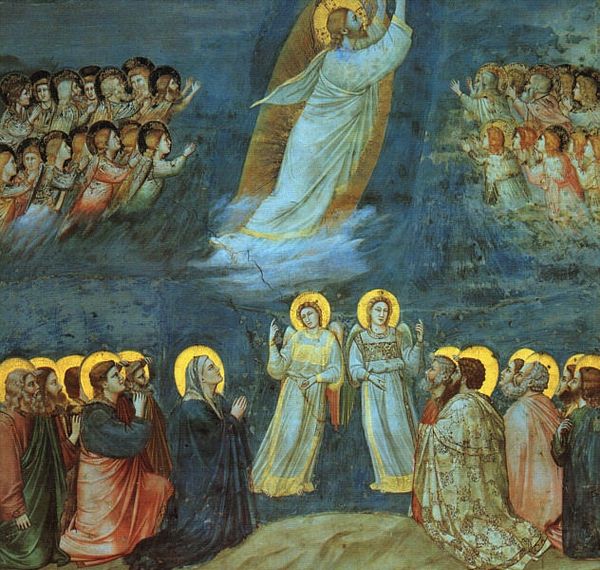
tempera, painting, oil-paint
#
allegory
#
narrative-art
#
tempera
#
painting
#
oil-paint
#
figuration
#
oil painting
#
history-painting
#
italian-renaissance
#
italy
Dimensions: 21 13/16 x 16 5/8 in. (55.4 x 42.23 cm) (image)19 7/8 x 14 11/16 in. (50.48 x 37.31 cm) (panel)
Copyright: Public Domain
Curator: Immediately, the painting has an austere and somber quality; almost a sense of mourning, despite the Nativity scene. Editor: We’re looking at "Nativity with Adoration of the Kings," a tempera and oil on panel work from the 15th century, Italian Renaissance. It is housed here at the Minneapolis Institute of Art. Curator: The dark palette certainly sets a tone. The Virgin Mary is a dark-skinned figure, bowed, yet enclosed within a space bathed in golden light, a symbol of her holiness and divine role. Even the cave feels protective, like a sacred space. The symbolism of light within darkness…it's so poignant! Editor: The color choices and rendering of the figures seem to disrupt idealized European beauty standards that reinforce white as default, godly. It raises some vital questions regarding whose stories are told, and how? Even the magi arriving seem diverse in appearance, which offers an interesting point of departure in terms of expanding the narrative of inclusion. Curator: Precisely, it invites interpretations rooted in different traditions of representation. Beyond just the literal narrative, the choice to represent such varied people and skin tones speaks volumes about universalism, and God’s love for all, not a select few. The choice of imagery has an important purpose: it seeks to make sacred figures and scenes relatable to an audience with varied social, regional, or even ethnic backgrounds. The overall impression—beyond race representation—is that it presents a profound connection of the divine within the worldly. Editor: Yet we also can't overlook that the lack of a named artist has the potential to diminish the contribution, skill, labor and vision of an individual whose identity, for whatever reason, is not visible to us. Perhaps we need to confront this dynamic. Does that influence our reception of its content? Curator: Yes, anonymity introduces an added layer of consideration—perhaps even sacrifice for their work—it can amplify that quality of the universal and symbolic which reflects values such as cultural continuity or social relevance, something that's applicable outside of that painter’s identity alone. Editor: An excellent way to approach this moving composition, which invites us to examine narratives beyond simple biblical history! Curator: Absolutely! May we all continue to unravel these layered visual messages.
Comments
No comments
Be the first to comment and join the conversation on the ultimate creative platform.













